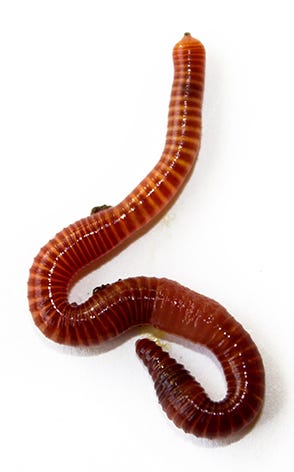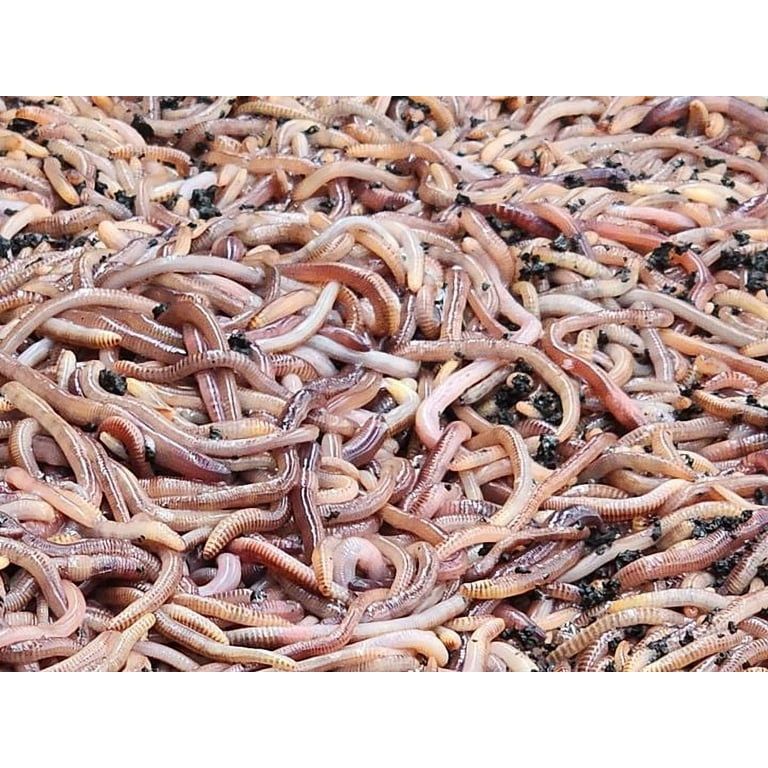Red wigglers: Top sources for purchase
Red wigglers: Top sources for purchase
Blog Article
Using Red Wigglers for Effective Organic Waste Disposal
The usage of red wigglers for natural waste disposal presents an engaging technique to handling food scraps while advertising ecological sustainability. These worms not only improve waste decomposition yet likewise produce useful worm castings, which can dramatically enhance dirt health. Their capacity to process big volumes of organic product with minimal initiative positions them as an obtainable service for houses and neighborhoods alike. Nonetheless, understanding the subtleties of setting up a successful worm container and maintaining an optimal environment is important for optimizing their benefits. The next actions in this procedure may amaze you.
Advantages of Making Use Of Red Wigglers
Among one of the most engaging benefits of using red wigglers for organic waste disposal is their amazing effectiveness in composting. These worms, clinically referred to as Eisenia fetida, are particularly adjusted for damaging down natural products, allowing them to process waste as much as twice their body weight every day. This fast decay not only accelerates the composting process but also produces nutrient-rich worm spreadings that significantly boost dirt top quality.
In addition, red wigglers add to a reduction in garbage dump waste. By diverting organic materials from landfills, they aid decrease methane exhausts-- a powerful greenhouse gas. This environmental benefit is essential in the fight versus environment modification.
Furthermore, red wigglers are low-maintenance and can flourish in various environments, making them accessible for both novice and seasoned composters. Their capability to reproduce swiftly guarantees a stable populace, promoting continuous waste processing.
Setting Up Your Worm Container
Producing an effective worm container is necessary for maximizing the advantages of composting with red wigglers. The first action is picking a proper container. A bin constructed from plastic or wood, with a capacity of 10 to 20 gallons, is suitable. Guarantee the container has appropriate drainage openings to avoid excess dampness, as red wigglers flourish in a wet however not soaked atmosphere.
(red wigglers near me)Next, prepare the bedding product, which offers as the worms' environment and food resource. Shredded newspaper, cardboard, and coconut coir are outstanding options. Go for a bedding deepness of around 4 to 6 inches. The container ought to be placed in a dark, temperature-controlled area, preferably in between 55 ° F and 77 ° F, to preserve worm activity.
When the bin is set up, present the red wigglers, enabling them to accustom to their new setting. It's vital to keep an eye on moisture degrees and temperature level on a regular basis. A well-kept bin will certainly not only sustain the health and wellness of the worms but additionally assist in efficient disintegration of organic waste. By following these standards, you can create a growing environment that adds to lasting waste administration.
(red wiggler worms for sale)
What to Feed Red Wigglers
An understanding of the appropriate diet plan for red wigglers is important for maintaining a healthy and balanced worm populace and enhancing composting effectiveness. These items not just supply vital nutrients however also add to the wetness balance within the worm container.
It is critical to prevent specific foods that can harm the worm population. Red wigglers ought to not be fed meat, milk items, oily foods, or processed things, as these can draw in insects and develop unpleasant odors. red wigglers. In addition, citrus fruits and hot foods should be decreased, as their acidity can be detrimental to worms
Checking the worm bin for food usage prices will certainly help make sure that red wigglers are obtaining an adequate diet plan while keeping an efficient composting environment. Appropriate feeding techniques are essential for promoting a prospering ecosystem within the worm bin.
Preserving Your Worm Environment
A well-maintained worm environment is crucial for the wellness and performance of red wigglers. To make certain optimum problems, it is critical to keep track of temperature level, moisture, and oygenation within the worm bin (red wigglers).
A great guideline of thumb is to preserve dampness at roughly 70% to 80%. If the bedding ends up being too wet, it can lead to anaerobic problems that are hazardous to the worms.

Using Worm Castings in Gardening
Rich in nutrients and useful bacteria, worm spreadings act as a remarkable organic fertilizer for horticulture. Created with the gastrointestinal processes of red wigglers, these castings contain an array of necessary nutrients, consisting of nitrogen, phosphorus, and potassium, which advertise durable plant growth. Unlike synthetic fertilizers, worm spreadings supply a slow-release system, making sure that nutrients are available to plants over an extended duration, consequently lowering the threat of nutrient leaching and soil deficiency.
Along with vitamins and mineral material, worm spreadings improve soil structure and oygenation, enhancing dampness retention and drain. The microbial life existing in worm spreadings helps to subdue virus and advertises a healthy and balanced soil environment, further profiting plant wellness. When incorporated into the dirt or used as a leading dressing, worm spreadings can dramatically improve seed germination prices, origin growth, and general plant vigor.
For optimal results, gardeners must apply worm spreadings at a price of 1-2 inches per square foot, blending them into the soil or integrating them into potting mixes. Overall, using worm spreadings is an environment-friendly approach to enriching soil fertility and ensuring growing yard settings.
Final Thought

Report this page